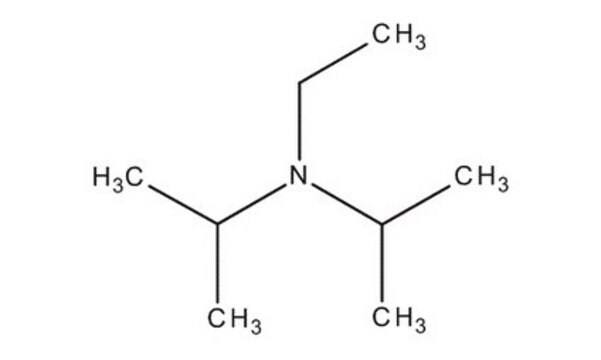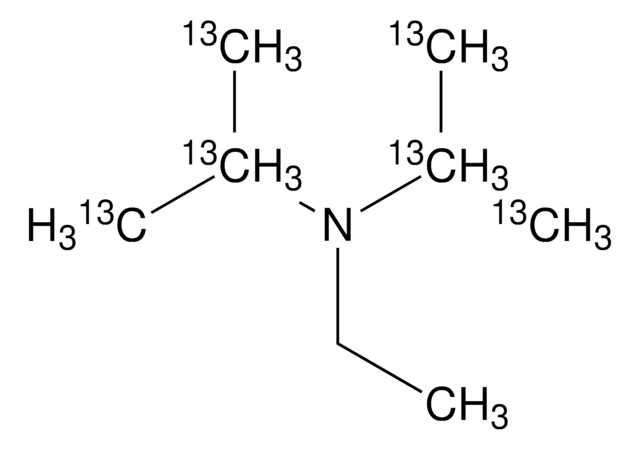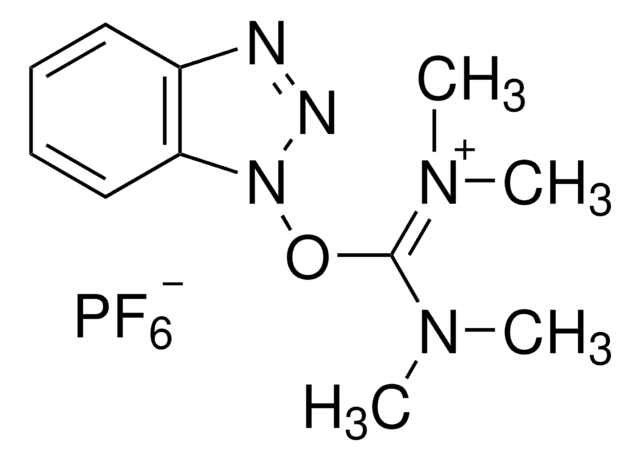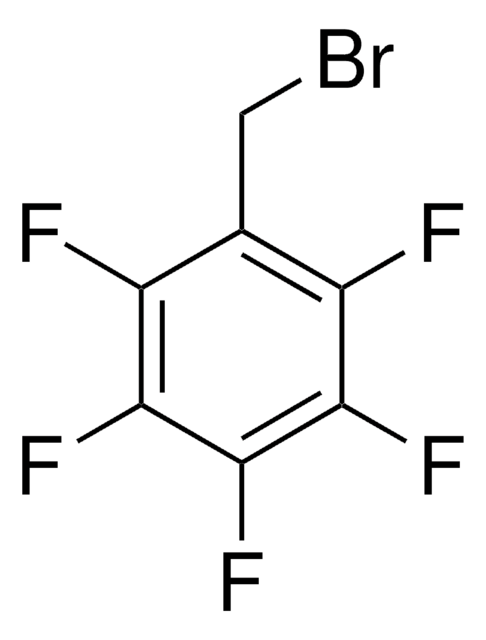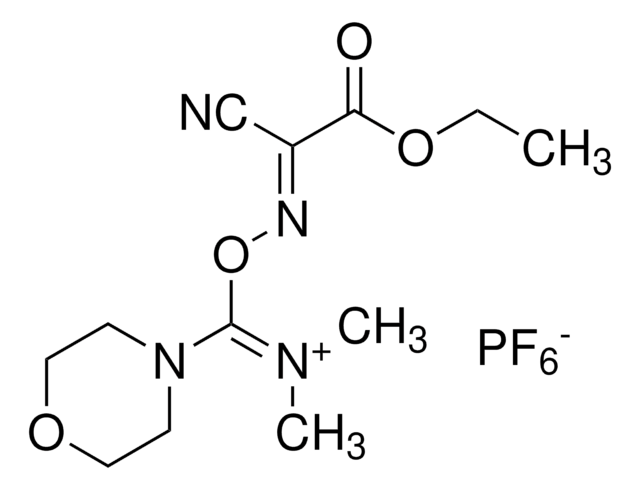496219
N,N-Diisopropyléthylamine
99.5%, biotech. grade
Synonyme(s) :
N-Éthyldiisopropylamine, DIPEA, « Base de Hüning », Éthyldiisopropylamine
About This Item
Produits recommandés
Qualité
biotech. grade
Niveau de qualité
Pression de vapeur
31 mmHg ( 37.7 °C)
Essai
99.5%
Forme
liquid
Impuretés
<0.050% water
Couleur
APHA: <20
Indice de réfraction
n20/D 1.414 (lit.)
pH
12.3 (20 °C)
pb
127 °C (lit.)
Pf
<−50 °C (lit.)
Solubilité
water: soluble 4.01 g/L at 20 °C
Densité
0.742 g/mL at 25 °C (lit.)
Application(s)
peptide synthesis
Chaîne SMILES
CCN(C(C)C)C(C)C
InChI
1S/C8H19N/c1-6-9(7(2)3)8(4)5/h7-8H,6H2,1-5H3
Clé InChI
JGFZNNIVVJXRND-UHFFFAOYSA-N
Vous recherchez des produits similaires ? Visite Guide de comparaison des produits
Description générale
Application
- In the palladium (0)-catalyzed alkoxy carbonylation of allyl phosphates and acetate.
- In the selective enolate formation along with boryl triflates.
- In the C–N coupling of aryl halides with nitroarenes in the presence of nickel catalyst.
Mention d'avertissement
Danger
Mentions de danger
Conseils de prudence
Classification des risques
Acute Tox. 3 Inhalation - Acute Tox. 4 Oral - Aquatic Chronic 2 - Eye Dam. 1 - Flam. Liq. 2 - STOT SE 3
Organes cibles
Respiratory system
Code de la classe de stockage
3 - Flammable liquids
Classe de danger pour l'eau (WGK)
WGK 2
Point d'éclair (°F)
49.1 °F
Point d'éclair (°C)
9.5 °C
Faites votre choix parmi les versions les plus récentes :
Déjà en possession de ce produit ?
Retrouvez la documentation relative aux produits que vous avez récemment achetés dans la Bibliothèque de documents.
Les clients ont également consulté
Notre équipe de scientifiques dispose d'une expérience dans tous les secteurs de la recherche, notamment en sciences de la vie, science des matériaux, synthèse chimique, chromatographie, analyse et dans de nombreux autres domaines..
Contacter notre Service technique

